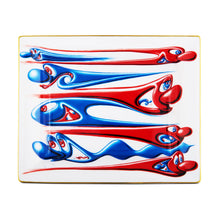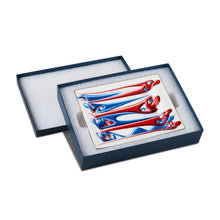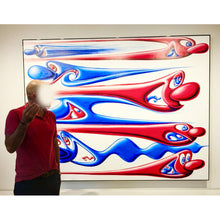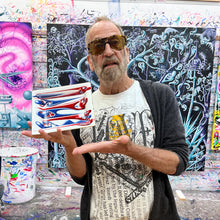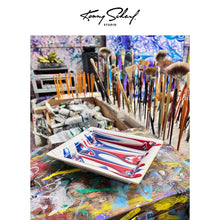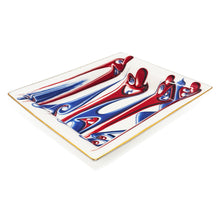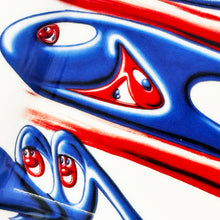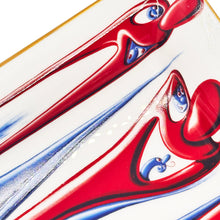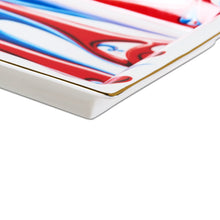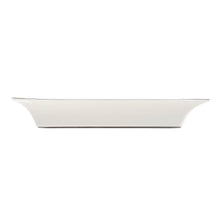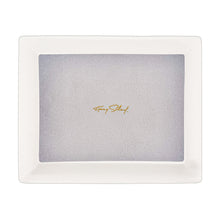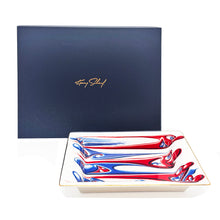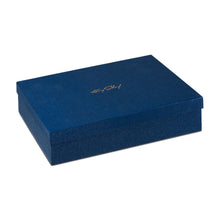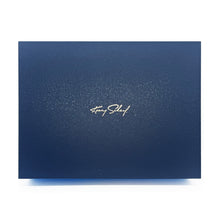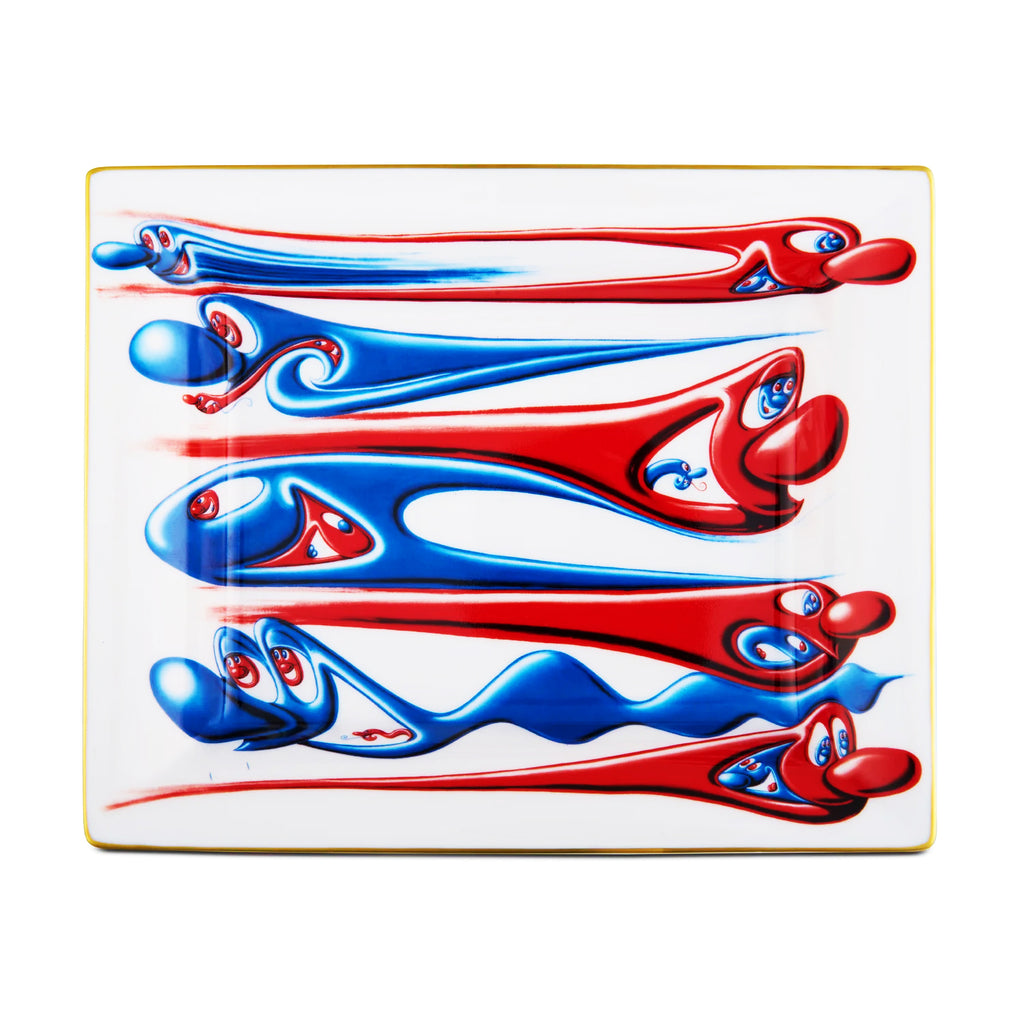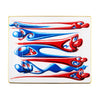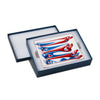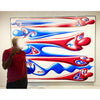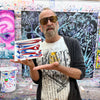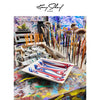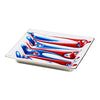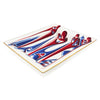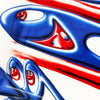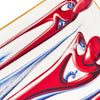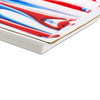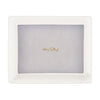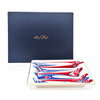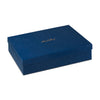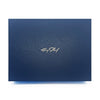'L R R L' by Kenny Scharf, 2025
Unique "catch-all" tray featuring the artist's vibrant and surreal aesthetic.
Based on his large, original oil and acrylic on linen painting from 2024 (see photo).
6.875 x 8.5 x 1.25 Inches
17.5 x 21.6 x 3.2 Centimeters
8.5 x 11.3 x 2.2 Inches (box)
Energetic yet elegant bone china catch-all tray with gold-plated trim.
Soft grey suede base with Scharf's embossed signature in gold.
Limited Edition of 250
New in original, custom padded box also with Scharf's embossed signature in gold.
ABOUT THE ART
Produced in a limited run, this tray celebrates Kenny Scharf’s vibrant and surreal aesthetic, offering collectors and enthusiasts a rare opportunity to bring his distinctive energy into their homes. A true embodiment of Scharf’s enduring legacy, “L R R L”, 2024 is reimagined here as a tangible, elegant creation.
ARTIST BIO
When Kenny Scharf first became a student at the School of Visual Arts in Manhattan, he was a bit underwhelmed. He had expected to encounter bleeding-edge audacity and grit from the school, its students and the city itself. Instead he found the place to be little different from what he might have come across back home in LA.
That all changed one day when Scharf met another young artist, one whose intensity and outsider edge stood out among the many flavorless students at SVA. Jean-Michel Basquiat, who at the time was already making a name for himself in the downtown art world through his graffiti partnership SAMO©, took to Scharf immediately, issuing a bold prediction about his new friend’s potential as an artist.
”I walked into the cafeteria and there he was. There was Jean, he was 17, I’m 19. He just kinda looked at me and my first reaction was, like, who is this guy?…He had this intensity about him,” Scharf said during a panel discussion organized last year by the Basquiat estate. Opening his black, zippered portfolio, Scharf offered the future neo-expressionist virtuoso a look at one of his paintings. “And he says, you’re gonna be famous. And I was like ‘what?’ What a thing to say to someone you just met.”
From there the two became fast friends, Scharf introducing Basquiat to another up-and-comer, Keith Haring. Together the three would form the vanguard of one of the 20th century’s most fertile art scenes, turning Manhattan’s down-and-out East Village into the epicenter of new wave style, street art chutzpah, and heedless creativity. It’s difficult to overstate the importance of the art movement that flourished in the shunned and sequestered neighborhoods of lower Manhattan during the early 1980s, except to say that a new era in contemporary art was born in a cosmic flash and it is still influencing the art world today.
Scharf is the only surviving member of what he once called the “Three Musketeers” of the 1980s downtown scene. Basquiat died of a drug overdose at 27 in 1988 and Haring succumbed to AIDS-related complications at 31 in 1990. And though he has long since quit the Lower East Side, Scharf’s legacy there is being revisited in a new show now open at Totah Gallery, a major retrospective that opens in November at the Brant Foundation, and the November opening of Luna Luna: Forgotten Fantasy, the art amusement park that features rides and attractions created by Scharf, Basquiat, Haring, Salvador Dalí, David Hockney, Roy Lichtenstein and others at The Shed in Hudson Yards.
At the time the trio came together, Basquiat and his partner Al Diaz had already drawn art world attention by melding fine art ambitions with advocacy and graffiti, bedighting the streets and alleys of lower Manhattan with words of wisdom attributed to SAMO©. And it was Basquiat who first introduced Scharf to the graf life.
“He always had his marker and we were walking around and he did the SAMO© and he handed it to me and I‘m like what am I gonna do? So I drew a TV set and wrote ‘the Jetsons’ in it,” Scharf said, referring to the classic 1960s Hanna-Barbera cartoon series that was an important inspiration for Sharf over his career. In fact, the coming Brant exhibition includes a 1981 piece called 'Destination Fun' that features the Jetson family zipping through space in solo flying saucers.
It was later that Scharf became acquainted with uptown graf writers and took his art below the streets: “I actually ended up meeting all the graffiti kids and going down and painting the subways. I think I’m the only Jewish white boy to paint the subways in NYC,” he said.
Forty-five (45) years after the downtown triumvirate came together, the historical importance of the work of Basquiat and Haring can hardly be questioned. Kenny Scharf, meanwhile, is approaching that status with works featured in major museums and galleries around the world and paintings that routinely fetch six figures. His current show at Totah reveals an artist whose work continues to mature but who has remained true to the artistic values and playful style he honed in lower Manhattan so long ago.
















